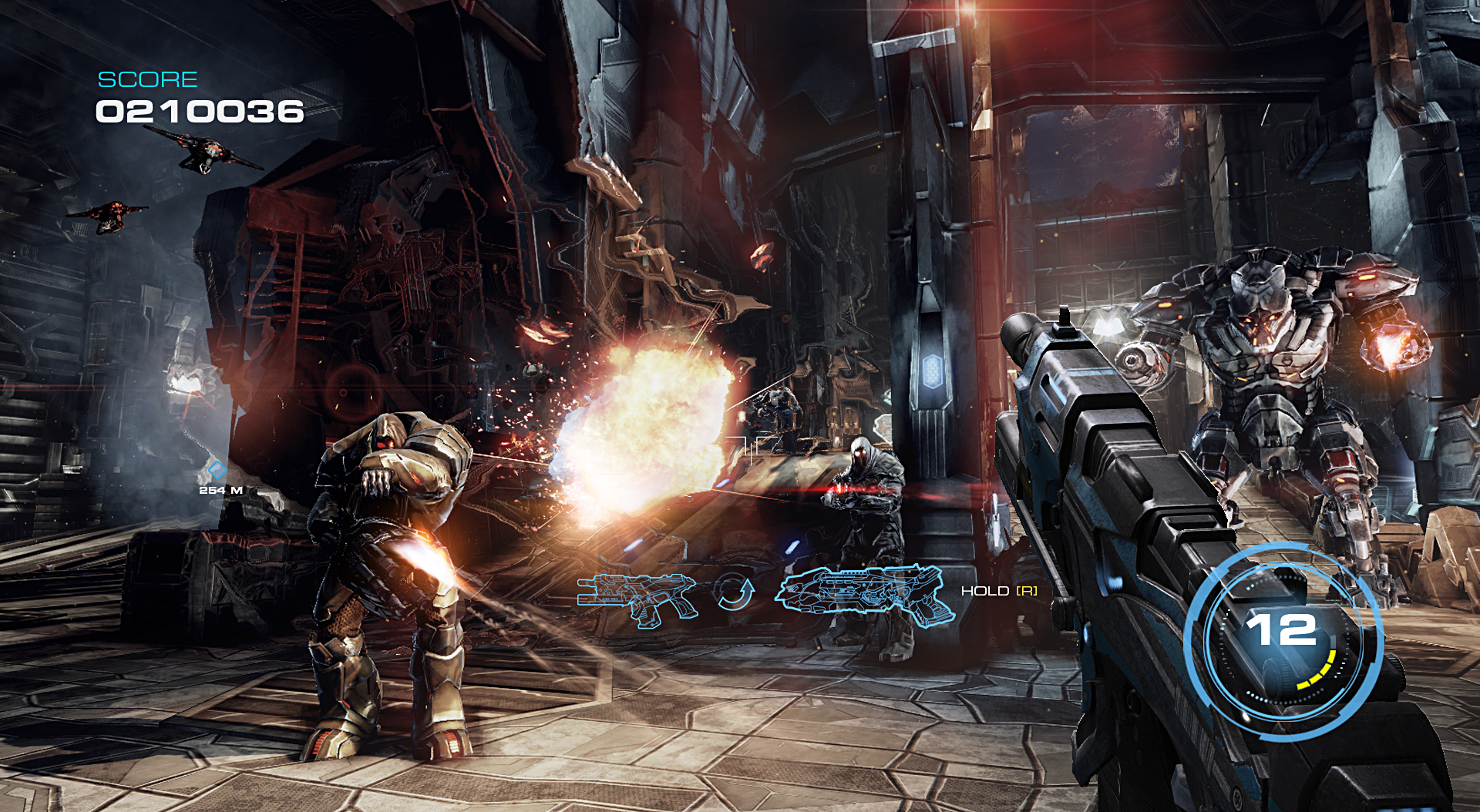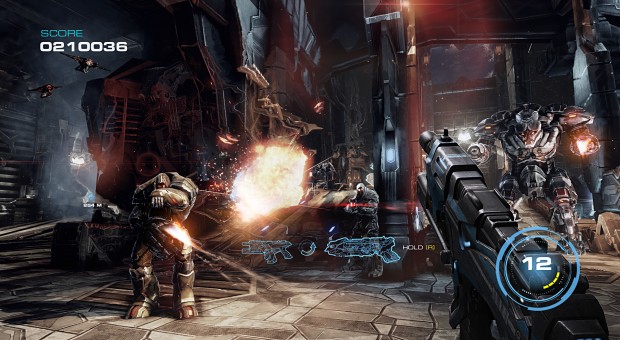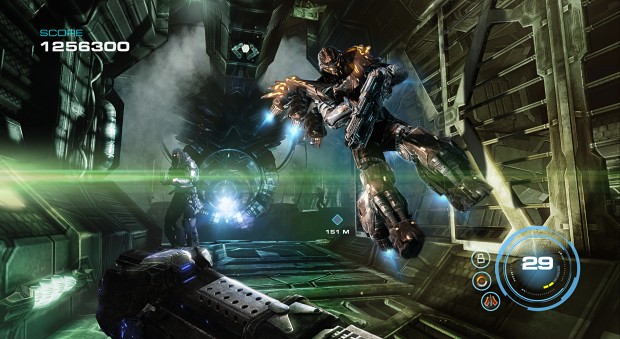Alien Rage attempts to pair modern conventions with old-school speed
Standing in front of a PC demo station at E3, City Interactive Creative Director Steve Skelton describes Alien Rage to XBLAFans as a shooter that takes “the modern sensibilities of shooters — you know, control setup, mechanics, and applying the old-school fun and games, run and gun, frenetic action to it.” Unfortunately for fans of that style game, that pairing has considerably slowed down the raw speed of Unreal Tournament and Quake III (the “old-school” games mentioned by the developers as inspiration) to create space for those modern sensibilities.
Alien Rage takes place on a space station in which something has gone horribly wrong – the premise is not unlike that of the first episode of the classic Doom. There are no hellspawn here, however. The playable level pitted us against aliens that might remind older players of the first Predator film, complete with invisibility on a select few of them (these cause distortion to the surrounding air and environment, a particularly nice effect).
Since so much of City Interactive’s efforts were spent attempting to channel the magic that makes Unreal Tournament such a fondly remembered classic, it’s worth exploring some of those elements more specifically. Part of what made the late-90s/early-2000s generation of PC shooters what they were was that there were no limitations on the number of weapons a player could carry, which allowed players to be extremely creative in finding solutions to problems. Taking out an enemy around a corner in Unreal Tournament could be accomplished by setting a series of traps down with the bio-rifle, by bouncing a grenade off of the far wall or by detonating a shock rifle combo that would reach around the corner with its massive explosion.
Alien Rage limits the number of available guns to two, following the conventions of more modern shooters such as the Halo series. This means that while the player may have up to two or three different strategies for any given encounter, the full range of options will never be simultaneously available.
While limiting the number of available guns feels hindering in the single-player shooter (the PC version’s multiplayer mode is being cut from the XBLA release), it’s not the biggest issue with the game. The most important part of a run-and-gun FPS is the ability to both run and fire a weapon at the same time. Running in Alien Rage instead causes players to hold their weapon close to their chest in a manner similar to how running is handled in Call of Duty. This feels natural in a realistic shooter based on running from one point of cover to the next. In Alien Rage, however, it only serves to slow the pace, forcing players out of the advertised quick gameplay and moving them into a pattern based on shooting from a position of cover.
Similarly, all of the guns have an extreme amount of recoil, requiring that they look down the sights of the guns – another of those “modern mechanics that are kind of expected with weapons.” This also speaks more to a Call of Duty-style of gameplay than the much faster Unreal Tournament and Quake III, both of which featured guns without recoil, which facilitated gunplay while actively moving and jumping in ways that are not present in Alien Rage.
To the game’s credit, it does look quite nice. It’s impressive that the developers were able to fit an Unreal Engine 3 game inside of the XBLA file size requirements. City Interactive’s shooter appears to be a game caught in the middle between two different first-person shooter philosophies, though. It isn’t fast enough to be an honest representation of Unreal Tournament’s gameplay, and it doesn’t feature enough specific direction or cover to be a Call of Duty title set in space.
Alien Rage is the red mage of current-generation shooters: while attempting to be jack of all trades, it ends up being master of none of them. By giving players too much of what they expect in a modern shooter, City Interactive has given players — at least in the demo level we played at E3 — relatively little in the realm of surprises. Players looking to revisit that intense, fast-paced experience of the late 1990s may end up being better off downloading some new maps for the old classics, while those who enjoy the experience of looking down the sights of realistic guns will likely prefer picking up a Call of Duty or Battlefield title that they don’t already own.



